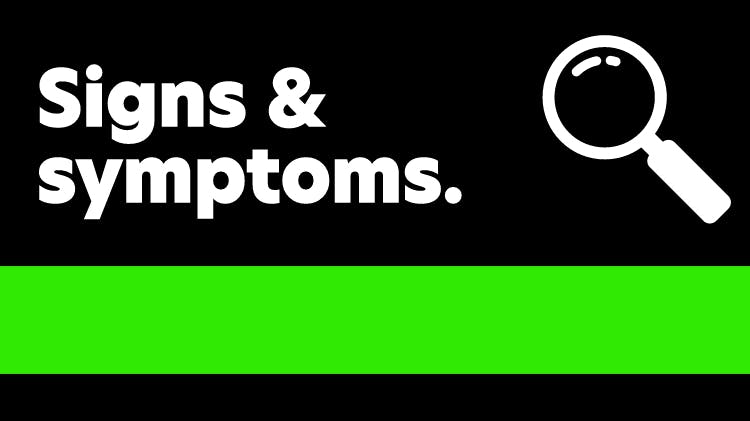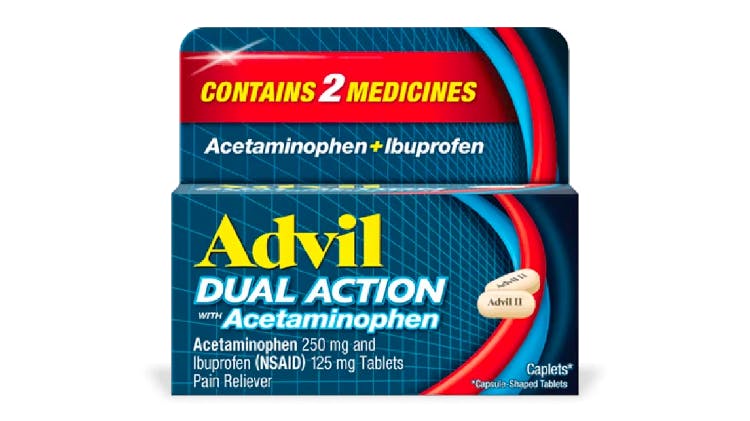Non-opioid pain medication options
When recommending over-the-counter, non-opioid medications for patients, there are two primary pain relief options for musculoskeletal pain: NSAIDs and analgesics.
Nonsteroidal anti-inflammatory drugs (NSAIDs). NSAIDs such as ibuprofen are commonly used pain medications for adults. NSAIDs are used for the treatment of many chronic pain conditions, and work by blocking the production of enzymes that make prostaglandins, a type of fatty acid that contributes to pain and inflammation.
NSAIDs are recommended for treating patients with long-term musculoskeletal pain in the lower back and osteoarthritis.
NSAIDs are also recommended for managing knee, hip, and hand osteoarthritis.
Non-specific NSAIDs can be used to treat mild-to-moderate musculoskeletal pain.
Topical NSAIDs may also be used to treat patients with chronic pain and are recommended specifically for knee osteoarthritis, among other conditions.
Non-NSAID analgesics. Pain relievers like acetaminophen are another non-opioid option for the treatment of musculoskeletal pain. Acetaminophen is an antipyretic analgesic with a wide safety margin that’s commonly used for pain relief across all age groups. Using acetaminophen is recommended specifically for treating patients with knee, hip, and hand osteoarthritis.
Non-pharmacological treatment options
Depending on the specifics of a patient’s pain, non-pharmacological pain treatments or therapies may be used in place of or in addition to medication.
Surgery. Surgeries such as arthroplasty, arthroscopy, or soft tissue and cartilage repair, may be recommended for patients with severe musculoskeletal pain.
Acupuncture. Acupuncture is an alternative medicine treatment that comes from traditional Chinese medicine practices and involves inserting small needles into key points on the body. Acupuncture is practiced to help relieve lower back pain, osteoarthritis, neck pain, tennis elbow, headaches and other conditions.
Physical therapy. For acute musculoskeletal pain, physical therapy may be recommended. The type of physical therapy will depend on the cause and location of the pain.
Occupational therapy. Occupational therapy techniques, which are structured to help patients struggling with cognitive, sensory, and physical issues develop skills, can also be used in the management of musculoskeletal pain.
Chiropractic treatment. Chiropractic adjustment, or spinal manipulation, may be an appropriate treatment for patients with certain musculoskeletal conditions such as lower back pain and neck pain.
Steroid injections. Steroid injections fall into the category of treatment called pain intervention. Incorporating steroid injections into treatment for musculoskeletal pain can help reduce the need to use analgesics. Pain intervention therapies like steroid injections are minimally invasive and can typically be completed in day-care or outpatient settings.
Therapeutic massage. Massage is a suitable pain management treatment in the short term but should be combined with or replaced by other methods such as stretching or an at-home exercise routine in the long term.
Splints. A splint can be used to hold a part of the body stable, thereby helping to reduce musculoskeletal pain and prevent added injury.
At-home treatments for musculoskeletal pain
Lifestyle changes and at-home pain management techniques can be recommended instead of or in addition to pain medication and non-pharmacological treatments.
Heat therapy. Hot and cold therapies can be applied to help manage musculoskeletal pain. Applying heat can help increase collagen extensibility, metabolic rate, blood flow, and inflammation resolution. It also helps decrease muscle spasms, stiffness, and pain. Heat therapy is often combined with stretching to help decrease musculoskeletal pain and increase function. Cold can also be applied to a painful area to help reduce vasodilation, hemorrhage, local inflammatory response, edema production and perception of pain. In combination with protection, rest, compression, and elevation, icing is effective both for acute injuries and long-term musculoskeletal pain.
Stretching and other exercises. Stretching, on its own and in combination with other therapies and management methods, can be an effective tactic for reducing pain and increasing bodily motion and function. However, patients should be advised to avoid overstretching or creating further injuries in the affected areas.
Stress reduction. According to the American Psychological Association (APA), chronic stress can impact a patient’s experience of musculoskeletal pain and can potentially put them at an increased risk for a variety of physical and mental health problems. To help reduce patients’ stress levels, the APA recommends the following strategies: focusing on sleep hygiene, spending quality time with friends and family, committing to daily walks, journaling throughout the day, and consulting with a licensed mental health professional.1
Long-Term Musculoskeletal Pain Treatment: What’s Next?
There are several options, both pharmacological and non-pharmacological, that can help patients manage their musculoskeletal pain. Using tests such as magnetic resonance imaging (MRI), x-ray scans, computed tomography (CT) scans, and blood tests, you can determine what’s causing your patient’s pain and, from there, develop the most effective course of treatment for your patient’s unique needs.







